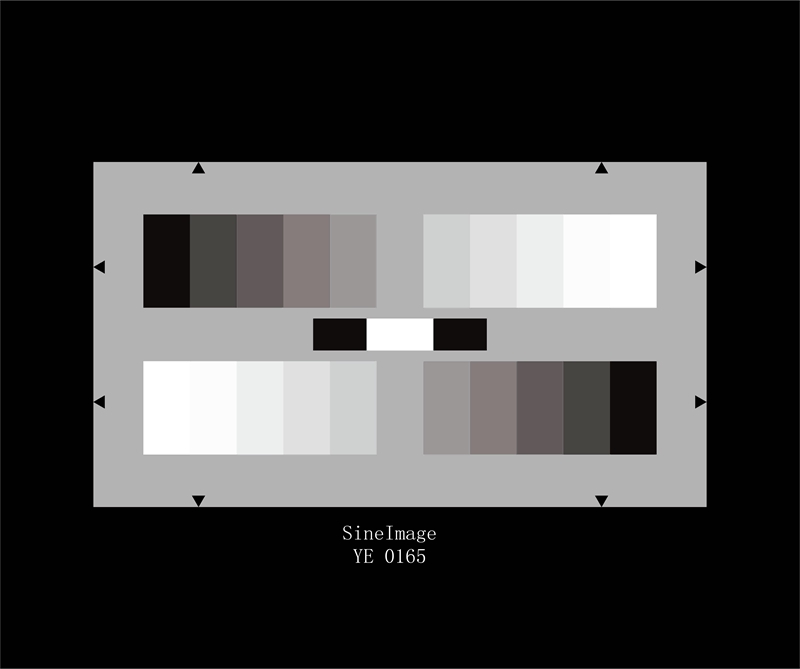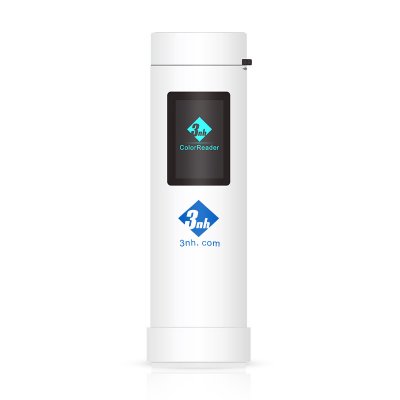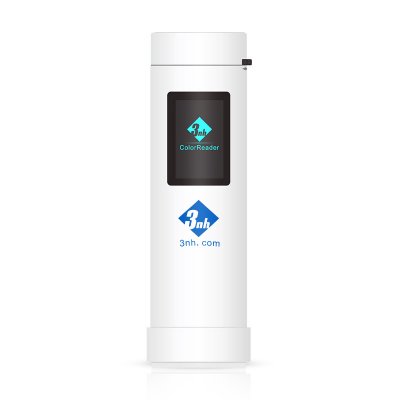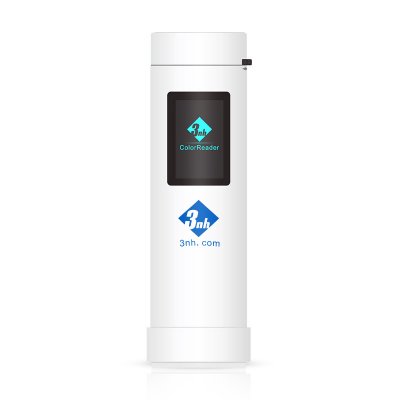Description
The YE 0165 is designed for evaluation the halftone reproduction of 16:9 electronic cameras. Two 11-graduated counter current gray scales are arranged on a gray background (D ≈ 0.56), the gray scale corresponds to the ITU recommendation BT.709.
The output signal of an optimally gamma-corrected camera according to BT.709 generates two counter current, linear step signals.
The contrast range of the gray scale is 40 : 1.
The values of the 11-graduated gray scale are as follows:
|
Step |
Density |
Remission in % |
Video signal for BT.709 in % |
Video signal for gamma 0.45 in % |
|
1 |
0.05 |
89 |
100 |
100 |
|
2 |
0.13 |
74 |
91 |
92 |
|
3 |
0.22 |
60 |
82 |
84 |
|
4 |
0.32 |
48 |
73 |
75 |
|
5 |
0.43 |
37 |
64 |
67 |
|
6 |
0.56 |
28 |
55 |
59 |
|
7 |
0.70 |
20 |
46 |
51 |
|
8 |
0.88 |
13 |
37 |
43 |
|
9 |
1.08 |
8 |
28 |
35 |
|
10 |
1.34 |
5 |
19 |
26 |
|
11 |
1.64* |
2 |
11 |
19 |
*The production process for reflective charts allow a maximum printed density of 1.64. The target value for the darkest step is 1.70. Therefore the distance of the last step differ slightly.
Two black fields and a white field are located between the gray scales. The density of the black fields in the middle is D > 3 (remission < 0.1 %), the white field between has a density of 0.05 (remission 89.9%).
Recommended usage:
Adjust the aperture until the lightest patch reaches 100% video signal at the waveform monitor. With an optimally corrected camera according to ITU recommendation BT.709 the darkest patch will reach 10% signal level.
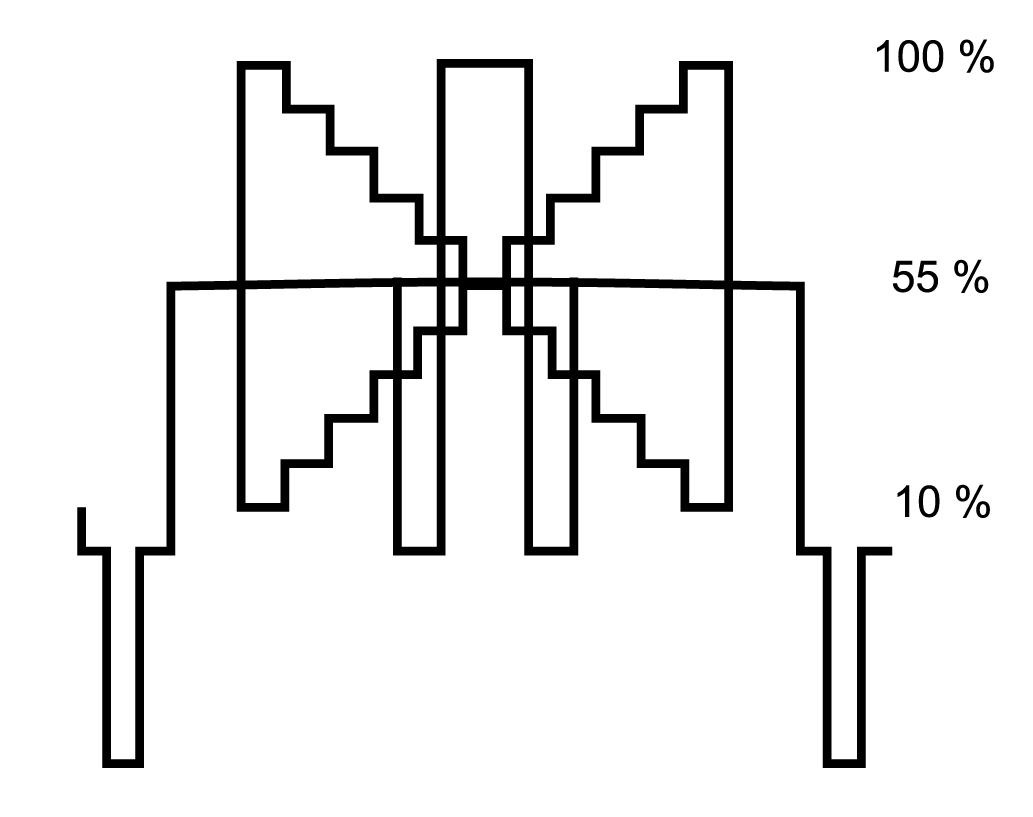
When using this chart with a gamma correction of 0.45 the video signal level for each step will change as listed in the table above.
